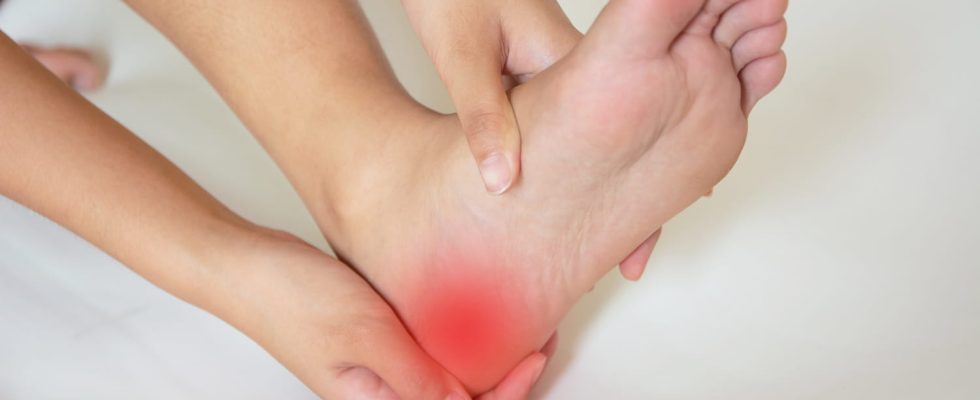A pressure sore corresponds to a necrosis of the skin, which generally occurs in a person who has remained motionless or bedridden for too long (for example in the event of hospitalization). Early symptoms, stages, treatment, can you die from it?
A pressure sore is necrosis of the skin associated with a lack of vascularization. According to the latest figures from theAPAMAD (Help and Home Care in the Haut-Rhin), bedsores affect especially bedridden people (3% of people hospitalized) and elderly (22% hospitalized patients over 65). What causes bedsores? What are the 4 stages of a bedsore? Do bedsores always heal? With what treatment ?
What is the definition of a pressure ulcer?
“A pressure sore is skin necrosis which is due to the interruption of the vascularization of a skin area. It is a localized destruction of the skin“, defines Dr. Isabelle Rousseaux, dermatologist. This lack of vascularization is often caused by a period of long immobility or prolonged bed rest. “As a result, the most frequent bedsores are those of the elderly.“, continues our specialist. support areas are areas prone to the occurrence of pressure sores:
- The heels
- the buttocks
- Hips
- The malleolus (bony projection of the ankle)
- Elbows
- Lower back
- The shoulder blades
- The back part of the skull…
What can cause a pressure sore?
The main cause of pressure sores is the combination ofdeterioration in general condition (extremely underweight or chronically ill elderly person) to prolonged bed restduring which the person is often unable to move (in case of paralysis or coma For example). Subjects with a heart failure or a respiratory failure or people suffering from diabetes are also more at risk. “Soft tissues being compressed between a bony prominence and a hard support (a bed for example), the blood supply (in other words, the vascularization) cannot take place properly, which leads to tissue destruction and therefore a necrosis“, explains our interlocutor.
What are the typical symptoms of a pressure sore?

“The formation of a pressure sore can be very rapid, sometimes in a few hoursSometimes in 2-3 days“, emphasizes the dermatologist.
► In the early stages:
- The skin in the bearing area turns red and is painful
- The skin is getting darker (blue, violet), until gradually becoming black.
- The affected area is cartoner And totally insensitive. This is the sign of tissue death.
► At a very advanced stage:
The attack which was initially superficial becomes more and more profound. skin necrosis reveals the underlying tissues: the muscles or even the bone in the most serious cases (A ulcer). The eschar can release a foul odorwhich can signify the presence of an (over)infection, if bed rest persists and in the absence of care.
What are the 4 stages of pressure ulcers?
Description and evaluation of the pressure ulcer are essential from the start of care and during follow-up, in order to define a quality care strategy. There are several evolutionary stages of pressure ulcers:
- Stage 0: in the patient at risk, a reversible redness appears on the fulcrum (prevention phase).
- Stage 1: appearance of persistent redness on the point of support, even after the pressure applied by the finger.
- Stage 2: blisters appearing in the support area
- Stage 3: tissue necrosis, the wound is deepeningthe subcutaneous tissues become necrotic.
- Stage 4: this is the most serious stage of the pressure sore, the wound is very deep and can reach the muscles and dig down to the bone (see diagram).
Can you die from a pressure sore?
Yes. Still according to APAMAD, 250,000 people around are affected by the phenomenon of bedsores And 14,000 people die each year in France.
A pressure ulcer is diagnosed by a simple clinical examination. The appearance of redness must prompt the diagnosis to put in place preventive measures, at this stage still reversible.
What treatment to treat a pressure sore?
“The treatment of pressure sores is mainly through prevention. Treating a pressure sore is complicated“, would like to emphasize our interlocutor. In general, the treatment of pressure ulcers is based on the prescription:
► of local hygiene care adapted to the stage of the pressure sore: the wound must be disinfected, cleaned (this is called debridement) with an antiseptic or a trypsin ointment and “fill” the wound with hydrocolloid dressings and greasy to avoid infection
► of massage by caregivers or physiotherapists, for example, which help to promote circulation (at early stages)
► ofan alternative or anti-decubitus mattress which makes it possible to vary the pressure zones on the body
► The surgical solution can be considered”if the pressure ulcer is too advanced or if it is associated with fibrosis“, she explains. But surgery is only possible in a patient who is healthy and has skin sufficiently elastic.
What prevention to avoid bedsores?
Several prevention rules make it possible to limit the risk of pressure ulcers in the bedridden subject:
- bring and ensure hydration and nutrition sufficient
- ensure frequent changing of positions if possible, bedridden patients should be placed in a chair (rather than in bed)
- have strict hygiene measures (immediately change soiled sheets…)
- use a suitable medium”there are mattresses specially designed to prevent bedsores from forming. These mattresses are for example air or water (composed of several sausages which inflate and deflate alternately, editor’s note)”, explains Dr Rousseaux.
- massage the area likely to be affected by a pressure sore
- in case of plastercheck that it is not too compressive.
Do bedsores always heal? What complications?
It depends on the stage of the pressure sore. At an early stage, treatment allows healing, which is not the case if the pressure sore is too advanced. “In the absence of support, muscles, tendons, then bones can be exposed“, warns our interlocutor.
Thanks to Dr Isabelle Rousseaux, dermatologist and venerologist in Lille. Source: Prevention and treatment of pressure ulcers in adults, Haute Autorité de Santé


